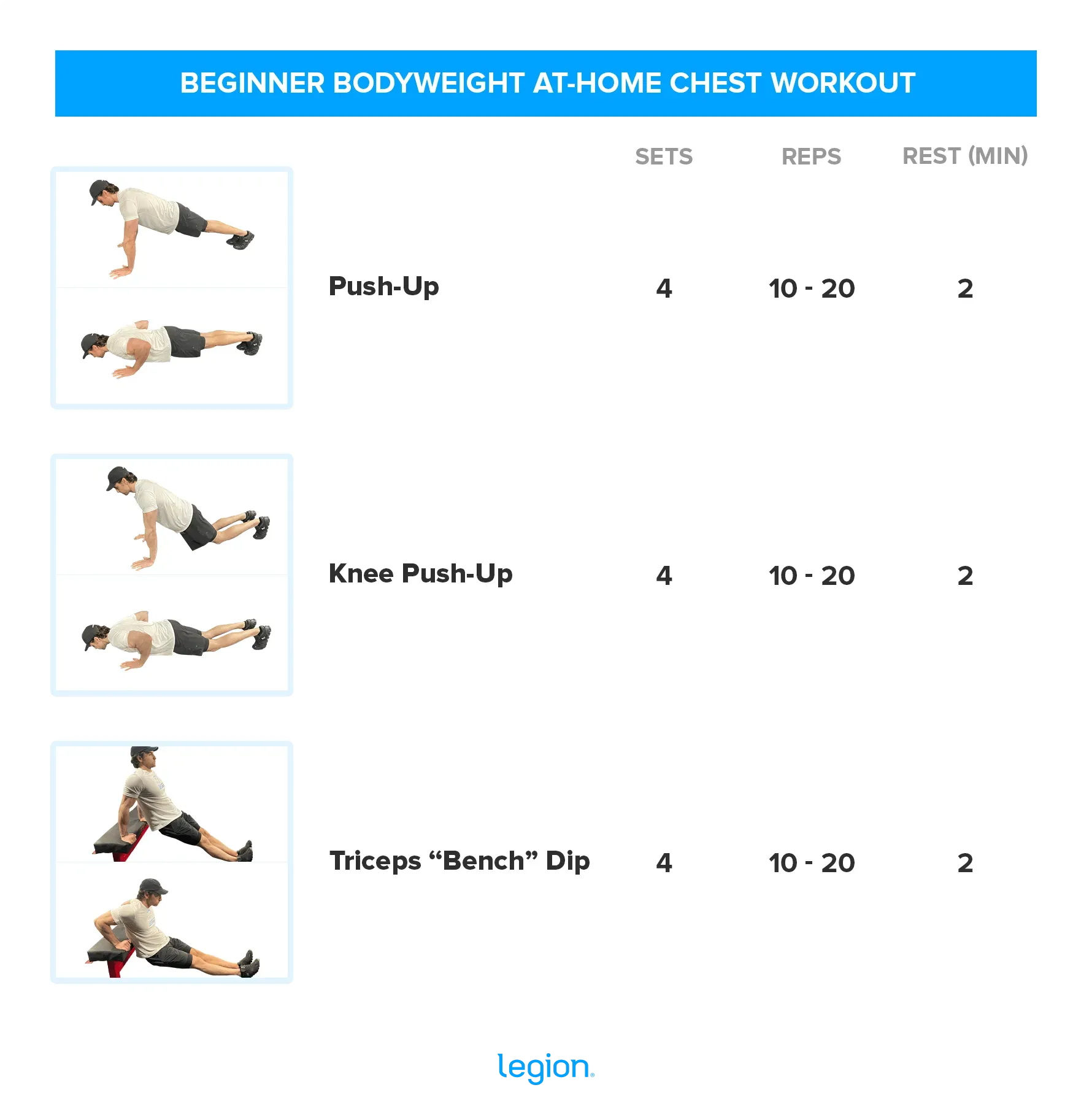Table of Contents
Thinking about building a stronger chest but the gym feels like another planet? Maybe you just don't have the time, or perhaps the thought of crowded weight rooms isn't your idea of a good time. Whatever the reason, if you're looking to start sculpting your chest muscles without leaving your living room, you're in the right place. A strong, well-defined chest isn't just about looking good in a t-shirt; those muscles are key players in everyday movements like pushing open heavy doors or carrying groceries. They also contribute to overall upper body strength and stability. Getting started can feel daunting, but a beginner chest workout at home is completely achievable, even with minimal or no equipment. We're going to walk through why working your chest matters, how to use just your bodyweight effectively, how adding some dumbbells can change the game, and finally, how to put it all into a routine that actually works for you. Ready to ditch the excuses and build some real strength? Let's get into it.
Why Bother with a Beginner Chest Workout at Home?
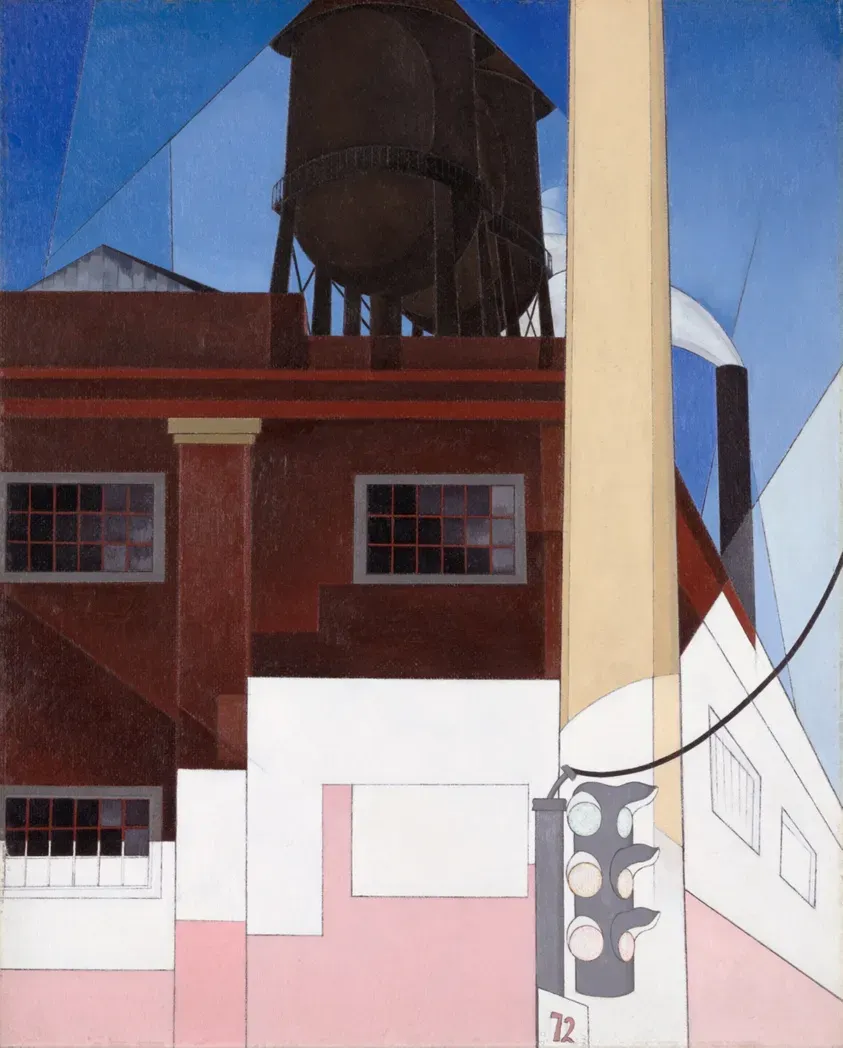
Why Bother with a Beginner Chest Workout at Home?
So, you're wondering why you should even bother with a beginner chest workout at home? Fair question. Look, it's not just about filling out a shirt. Your chest muscles, mainly the pectoralis major and minor, are surprisingly functional. They're involved in everything from pushing that stuck drawer closed to hugging someone (awkward or not). Building strength there helps with posture, makes daily tasks easier, and frankly, a little muscle definition doesn't hurt anyone. Plus, doing it at home saves you the commute, the locker room smell, and the awkward dance around someone hogging the bench press. It's convenient, effective, and you can do it in your pajamas if you really want to. No judgment here.
Your First Beginner Chest Workout at Home: Just Your Bodyweight
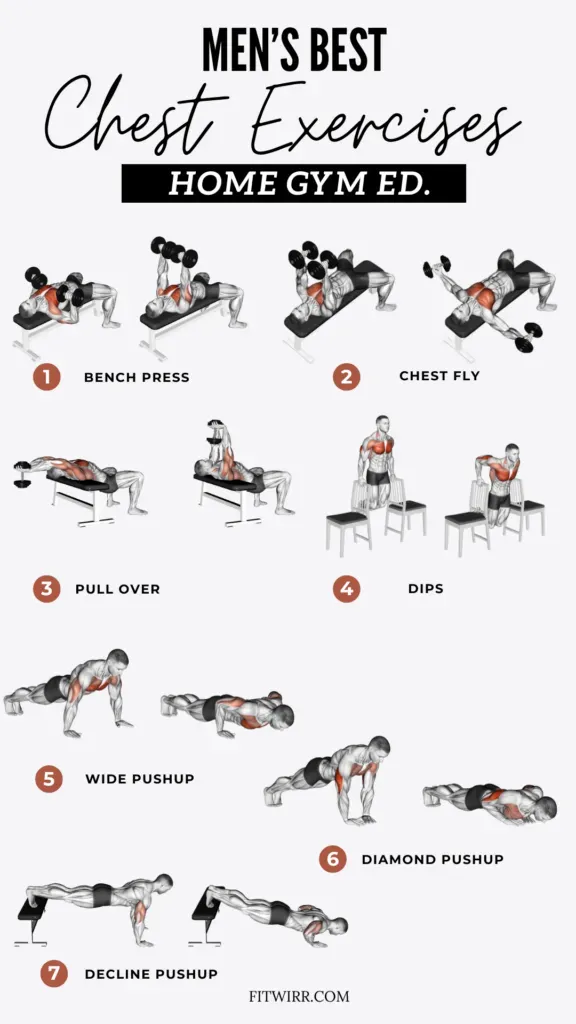
Your First Beginner Chest Workout at Home: Just Your Bodyweight
Starting Simple: Why Bodyweight is Your Best Friend
Alright, let's talk about getting down to business with your beginner chest workout at home. You don't need fancy machines or stacks of weights to start building strength. Seriously. Your own body is a perfectly good piece of equipment to begin with, especially when it comes to chest work. Think about it: exercises using your bodyweight are functional, meaning they mimic movements you actually do in real life. They also engage stabilizer muscles you might miss on a machine. Plus, there's zero cost involved, just you and some floor space.
The Almighty Push-Up and Its Friendly Variations
the king of bodyweight chest exercises is, without a doubt, the push-up. I know, I know, maybe the word itself makes you groan. But hear me out. The standard push-up is a fantastic compound movement hitting your chest, shoulders, and triceps. If a full push-up from your toes feels like trying to lift a small car right now, don't sweat it. That's where variations come in. You can make them easier by changing the angle.
Starting with incline push-ups against a wall or a sturdy piece of furniture (like a counter or a chair) is a great way to build up strength. The higher the incline, the easier it is. As you get stronger, you move to a lower surface until you can eventually work your way down to the floor. Kneeling push-ups are another solid option once wall push-ups get too easy but floor ones are still a struggle. Don't rush the process; focus on controlled movement.
- Wall Push-Ups: Lean against a wall, hands shoulder-width apart. Push away until arms are straight, then lower slowly.
- Incline Push-Ups: Use a table, counter, or sturdy chair. Hands on the edge, body straight. Lower chest towards the edge, then push up.
- Kneeling Push-Ups: On your knees, hands shoulder-width apart on the floor. Lower chest towards the floor, keeping back straight, then push up.
- Standard Push-Ups: Hands shoulder-width apart on the floor, body in a straight line from head to heels. Lower chest towards floor, then push up.
Form is Everything: Don't Just Go Through the Motions
Whatever variation of the push-up you start with for your beginner chest workout at home, form is absolutely crucial. It's not about how many shaky, half-reps you can crank out. It's about doing controlled, full-range-of-motion reps with proper technique. Keep your body in a straight line – no sagging hips or piking butts allowed. Engage your core like you're bracing for a punch. Lower yourself until your chest is close to the surface (wall, chair, or floor) and push back up powerfully. Think about squeezing your chest muscles at the top. If you feel it mostly in your shoulders or lower back, your form is probably off. It's better to do fewer reps with good form than a bunch of sloppy ones that might lead to injury and won't actually build the muscle effectively.
Adding Weight: Level Up Your Beginner Chest Workout at Home with Dumbbells
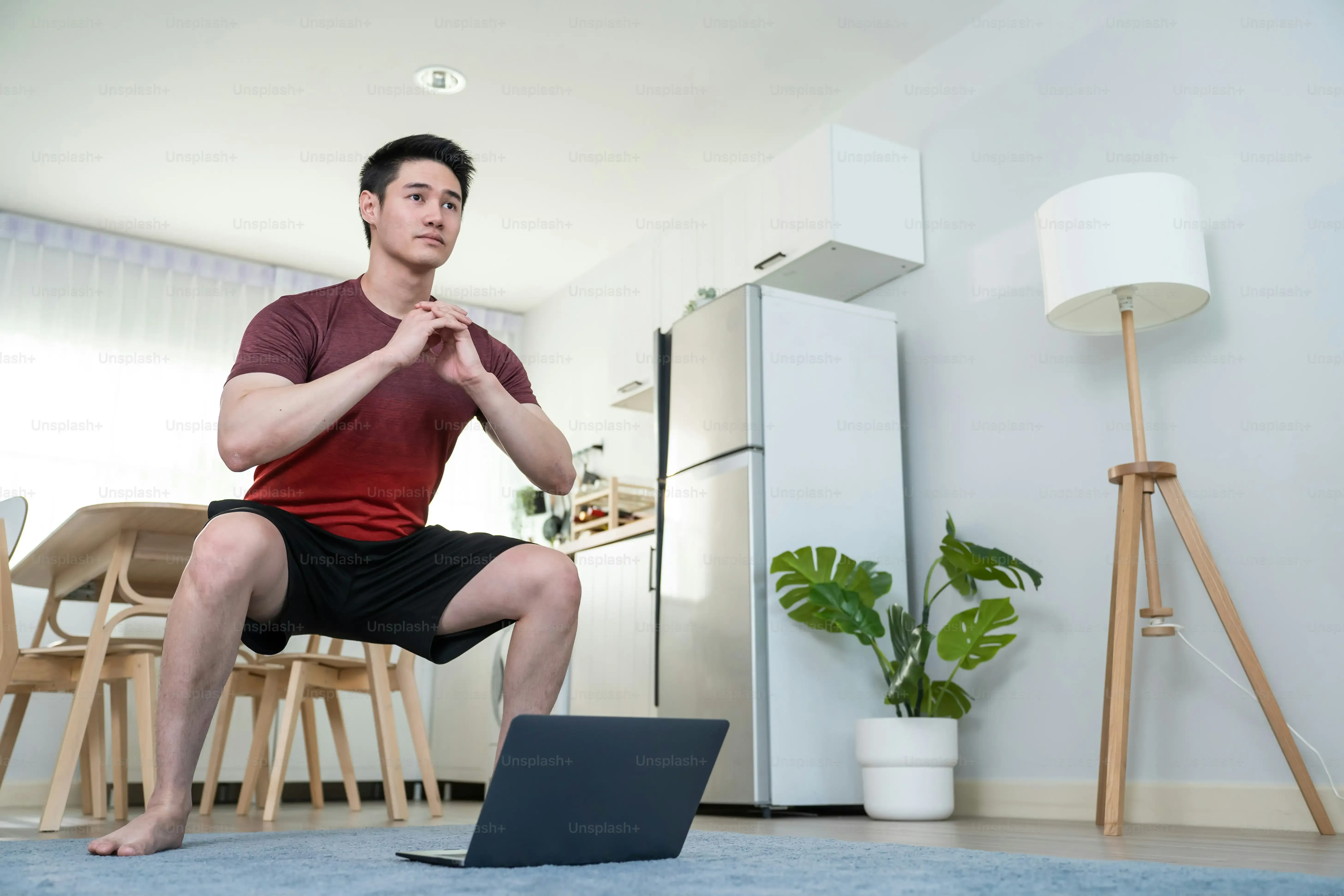
Adding Weight: Level Up Your Beginner Chest Workout at Home with Dumbbells
Why Grab Some Weights?
So, you've mastered the push-up variations and feel like you could push a small car now? Nice work. That bodyweight stuff is foundational, but eventually, you might hit a plateau. This is where adding some external resistance comes in handy for your beginner chest workout at home. Dumbbells are your best friend here. They don't take up much space, they're relatively inexpensive compared to a full home gym, and they offer a different kind of challenge than bodyweight alone. Adding weight allows you to progressively overload the muscles, which is fancy talk for making them work harder so they keep getting stronger and bigger. It's like giving your chest a new puzzle to solve.
Essential Dumbbell Chest Moves
When you're ready to incorporate weights into your beginner chest workout at home, the dumbbell press is the first exercise you need to know. It's essentially a push-up but lying on your back, which lets you focus purely on the pressing motion. You can do this on the floor, or if you have a bench or even a sturdy chair, that works too. Lying flat on your back, hold a dumbbell in each hand near your chest, palms facing each other or slightly angled. Press the weights straight up over your chest, squeezing your pecs at the top, then lower them back down slowly and under control. Don't just drop them. Another great move is the dumbbell fly, which targets the chest differently, focusing more on the stretch and squeeze. Lie on your back, arms slightly bent, holding dumbbells above your chest. Lower the weights out to the sides in an arc, feeling the stretch across your chest, then bring them back up the same way. Keep the bend in your elbows consistent.
Here are a couple of dumbbell exercises to get you started:
- Dumbbell Floor Press: Lie on your back, knees bent, feet flat. Hold dumbbells at chest level, elbows on the floor. Press weights straight up.
- Dumbbell Flyes (on floor or bench): Lie on your back. Hold dumbbells above chest, slight bend in elbows. Lower weights out to sides in an arc.
- Dumbbell Pullovers: Lie on back (or across a bench). Hold one dumbbell with both hands above your chest. Lower the weight in an arc behind your head, feeling a stretch in chest/lats, then pull it back over your chest.
Picking the Right Weight and Staying Safe
Don't try to be a hero with the weight right away. Start lighter than you think you need to for your beginner chest workout at home. The goal is to complete 8-12 repetitions with good form. If you can easily do 15 reps, the weight is too light. If you can barely do 5 with shaky form, it's too heavy. It should feel challenging by the last few reps, but you should still be in control. Always lower the weights slowly; that's just as important as the pressing part. And when you're done with a set, don't just let the dumbbells crash down. Control them back to the starting position or carefully set them on the floor beside you. Your toes will thank you later. As you get stronger, you can gradually increase the weight or the number of repetitions.
Making it Stick: Structuring Your AtHome Chest Routine
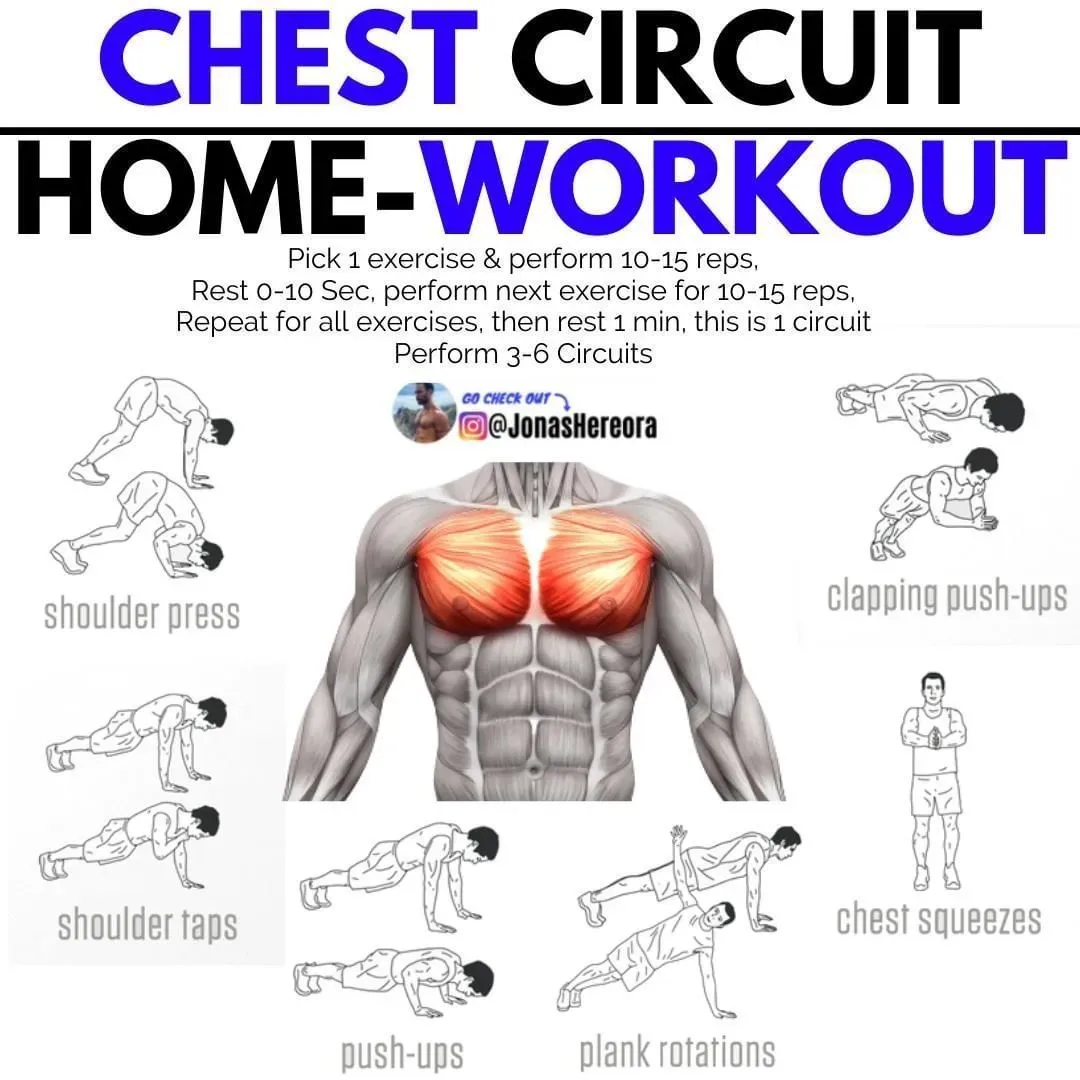
Making it Stick: Structuring Your AtHome Chest Routine
Consistency is Non-Negotiable
you've got the moves down – push-ups, maybe some dumbbell presses. Great. But doing them once every blue moon won't magically build a chest. The real secret to any effective fitness goal, including your beginner chest workout at home, is showing up consistently. Think of it like trying to learn a new language; a single lesson won't make you fluent. You need regular practice. Aim for working your chest muscles two to three times per week, allowing at least a day of rest in between sessions. This gives your muscles time to recover and rebuild stronger. Slot it into your schedule like any other important appointment. If it's not scheduled, life has a funny way of making sure it doesn't happen. Maybe Monday and Thursday mornings before work, or Tuesday and Friday evenings. Find what works and lock it in. No excuses about the weather or the commute when you're already home, right?
Listen to Your Body and Progress Smartly
As you consistently perform your beginner chest workout at home, you'll start getting stronger. Those wall push-ups will feel too easy, the kneeling ones will become manageable, and eventually, you'll be tackling full push-ups. When you can comfortably do 12-15 repetitions of an exercise with good form, that's your cue to make it harder. This is called progressive overload. For bodyweight moves, you can move to a harder variation (wall to incline, incline to kneeling, kneeling to standard). For dumbbell exercises, increase the weight slightly. Don't jump five pounds at once; maybe just one or two. Or, keep the weight the same and aim for more repetitions or an extra set. Crucially, pay attention to how your body feels. Soreness is normal, sharp pain is not. If something hurts in a bad way, stop. Pushing through pain is ego, not training. Rest when you need to, and don't be afraid to take an extra rest day if your muscles are screaming.
What gets measured gets managed. Consider tracking your progress:
- Date of workout
- Exercises performed
- Variation used (e.g., Incline Push-ups)
- Number of sets and repetitions for each exercise
- Weight used for dumbbell exercises
- How you felt (e.g., "challenging but doable," "felt strong," "muscles a bit sore")
Warm-Up, Cool Down, and Stay Balanced
Before you dive into your beginner chest workout at home, spend 5-10 minutes warming up. This isn't optional; it prepares your muscles and joints for work and reduces injury risk. Light cardio like jogging in place or jumping jacks gets your blood flowing. Dynamic stretches, like arm circles and chest stretches (gently reaching arms back), loosen things up. After your workout, take another 5-10 minutes for a cool-down. Static stretches, holding a stretch for 20-30 seconds, help improve flexibility and can aid recovery. A simple chest stretch involves standing in a doorway and placing your forearm on the frame, then gently leaning forward. Remember, the chest is just one muscle group. For a well-rounded physique and to avoid imbalances that can lead to injury, make sure you're also training your back, shoulders, arms, core, and legs on other days. A balanced routine is a strong routine.
Your At-Home Chest Journey Starts Now
So there you have it. Building a stronger chest doesn't require a membership fee or waiting for a bench to open up. You've seen how effective a beginner chest workout at home can be, whether you're just using your own bodyweight or adding a couple of dumbbells into the mix. The real trick isn't where you train, but *how* you train. Focus on controlled movements, feel the muscles working, and don't get caught up in trying to do too much too soon. Consistency beats intensity any day when you're starting out. Stop overthinking it and just start doing it. Your chest muscles will thank you.
